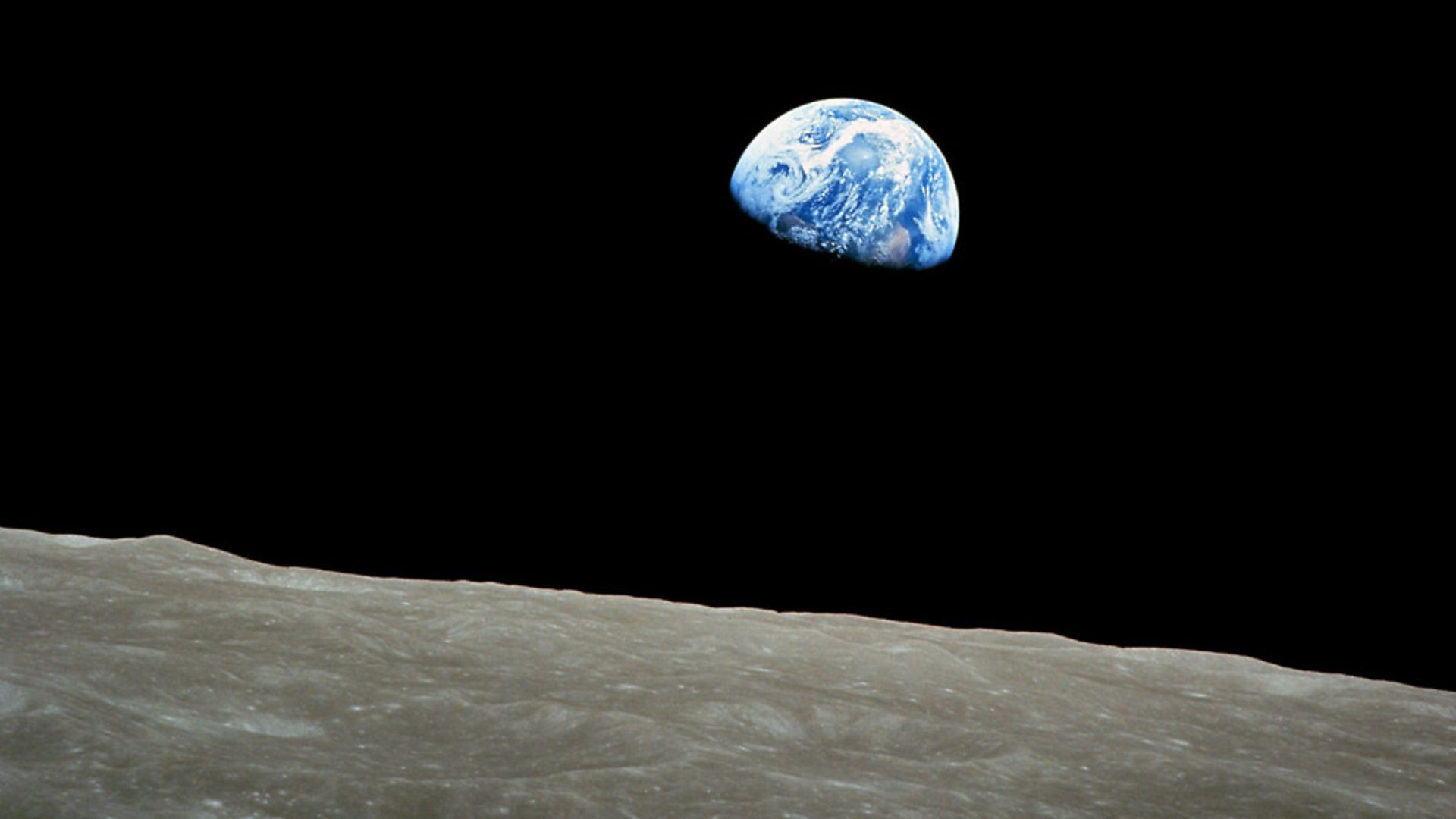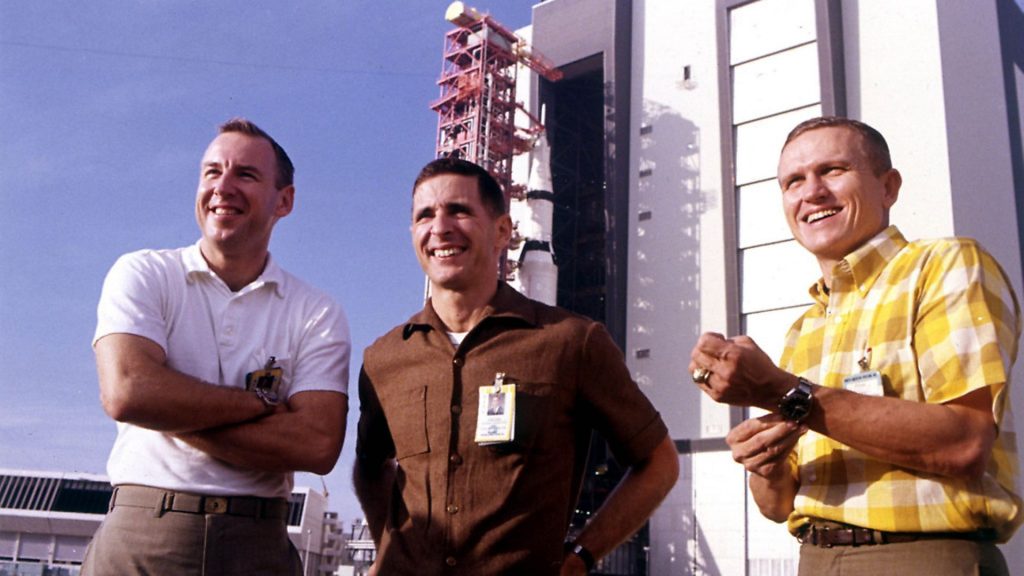
MICK O’HARE tells the story of perhaps the most important photograph ever taken.

Fifty years ago, as the first crewed spacecraft to circumnavigate the Moon was emerging from the dark side, the astronauts on board were looking out of the window.
An audio recording of the moment captures the excitement as the three Apollo 8 crew members – William Anders, Frank Borman and Jim Lovell – watch the Earth rising from beyond the moon’s surface.
Anders: Oh my God! Look at that picture over there! There’s the Earth coming up. Wow, is that pretty.
Borman (joking): Hey, don’t take that (picture), it’s not scheduled.
Anders: (laughs) You got a colour film, Jim? Hand me that roll of colour quick, would you…
Lovell: Oh man, that’s great!
The resulting image, taken by Anders, has become known as Earthrise and is arguably one of the most famous photographs ever taken.
It has frequently been cited as the first ever taken of the Earth rising from behind the Moon, but it would appear to have been the third.
The probe Lunar Orbiter 1 took a similar, much fuzzier, image in 1966 and just moments before Anders took Earthrise, Borman, the mission commander, took a black and white version. But because Earthrise was the first taken in colour it has become synonymous with Apollo 8 and of the three is certainly the most reproduced since. Its significance echoes down the decades for it marked the point when humans first looked back at their home world.
Many cultural historians also argue that the image – taken on Christmas Eve 1968 – marked the beginning of the environmental movement, showing the blue, living planet with its oceans and white clouds, to which the astronauts were returning. Borman described it as the most beautiful thing he had ever seen, while Lovell was overwhelmed by how tiny Earth looked. When the first Earth Day was held in April 1970, Earthrise was used as the nascent movement’s symbol, and wildlife photographer Galen Rowell has described the image as ‘the most influential environmental photograph ever taken’.
Jennifer Levasseur, space history curator at NASA’s Air and Space Museum in Washington DC has studied the historical and cultural effects of the photograph. ‘Being able to see the Earth from a distance provides a surreal and sublime viewpoint,’ she says. ‘You know what it’s going to look like, but there is what’s known as the ‘overview’ effect which means that when you do actually see it, it can fundamentally change your perception.
‘Earthrise did that in a way that few single photographs have done before or since. And it’s been reinterpreted so many times down the years by different people in different times for different purposes.’
She is right: the photograph has been used by environmentalists, politicians, religious groups, even flat-earthers…
‘It’s interesting,’ says Levasseur, ‘that when you listen to the audio of the mission, how surprised the astronauts sound upon seeing the Earth appear. Yet the reality is that they were expecting it, it was in the mission plan, they knew the view was coming, but when they actually saw it, it was more striking than they could have imagined. And that’s why people today still think that the photograph was an unexpected and fortunate event, when actually it wasn’t.’
The photograph, or at least the reaction of the astronauts, also caused a minor controversy at the time, after they began to recite verses from Genesis while the television cameras rolled. With a clear separation between church and state in the US some people objected to what were essentially federal government employees using their work time to promote religion.
‘Non-Christians in the US felt it was important to maintain that separation,’ explains Levasseur. ‘And some were offended by the words of the astronauts.’ Perhaps the irony is that is that, with the recent and concurrent rise of the evangelical right and Christian religiosity in the United States, it might actually sound less strange today. Back in 1968 the demarcation between church and state was rigorously upheld. The founder of the American Atheists group, Madalyn Murray O’Hair, even tried to sue the US government although her claim was dismissed by the Supreme Court.
Apollo 8 did not land on the moon, but its contribution to the stories of the Apollo missions via Earthrise is probably greater than those that did. ‘It’s the broader accessibility of an image as opposed to a rock or soil sample, even though those actually come from the moon itself,’ says Levasseur. ‘Interestingly, when Neil Armstrong finally set foot on the moon on the Apollo 11 mission his first job was to collect a soil sample to prove he’d actually been there and in case they had to depart quickly. But instead he forgot and started taking photographs and had to be reminded by mission control to collect his sample. In that moment Armstrong, possibly spontaneously, realised the greater significance of images to the people back home.’
Of course, Earthrise was taken on film. There were no digital images in those distant days, so it was not until December 30, after the astronauts had returned, that the film was developed and the photograph shown to the world.
The tiny blob of colour above a grey moonscape and amid inky black space appeared in newspapers and, more notably, colour supplements around the globe. Its impact was instantaneous and lasting. But would that single photograph taken today have had the same effect on the public imagination? ‘I suspect not,’ says Levasseur. ‘I hesitate to say it would be dismissed but I think our expectations of technology are different now. Maybe in part because we have seen so many movies about space, with superb special effects, but also because popular culture and attitudes play a big role. Factors such as social media, conspiracy theories, people’s disbelief, and a more general lack of being in awe… the conditions are very different today.’
Earthrise was taken in 1968, at the end of a year in which the Vietnam war continued to rage, political protest and unrest erupted in France, Czechoslovakia and many other countries, and Martin Luther King Jr was assassinated. The apparent fragility of the planet as depicted in Earthrise arguably gave humanity a brief pause for thought. ‘In Earthrise, you can’t see any borders,’ adds Levasseur pointedly.
When US president Lyndon B Johnson was leaving office in January 1969 he had NASA reproduce the image for him and sent it along with a personalised letter to the leader of every other nation in the world. As well as celebrating NASA, his nation’s achievements and the astonishing success of the Apollo programme, he was saying to the world ‘here is the Earth, it’s a fragile thing, and our duty as political leaders is to ensure it survives. Johnson saw the political beyond the environmental,’ says Levasseur. ‘And he took the opportunity afforded by the world’s most famous photograph to make the point’.
Maybe Johnson had himself spotted the space oddity. Considering Apollo 8 was the first crewed mission to orbit the moon, it is surely incongruous that it is instead remembered for a photograph of the Earth.











